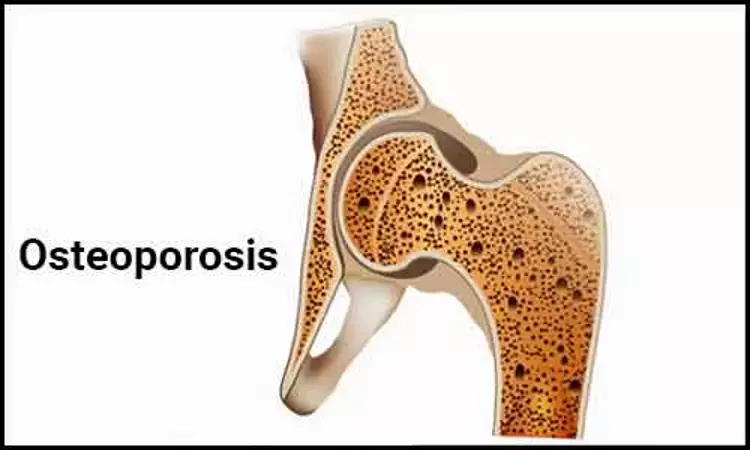- Home
- Medical news & Guidelines
- Anesthesiology
- Cardiology and CTVS
- Critical Care
- Dentistry
- Dermatology
- Diabetes and Endocrinology
- ENT
- Gastroenterology
- Medicine
- Nephrology
- Neurology
- Obstretics-Gynaecology
- Oncology
- Ophthalmology
- Orthopaedics
- Pediatrics-Neonatology
- Psychiatry
- Pulmonology
- Radiology
- Surgery
- Urology
- Laboratory Medicine
- Diet
- Nursing
- Paramedical
- Physiotherapy
- Health news
- Fact Check
- Bone Health Fact Check
- Brain Health Fact Check
- Cancer Related Fact Check
- Child Care Fact Check
- Dental and oral health fact check
- Diabetes and metabolic health fact check
- Diet and Nutrition Fact Check
- Eye and ENT Care Fact Check
- Fitness fact check
- Gut health fact check
- Heart health fact check
- Kidney health fact check
- Medical education fact check
- Men's health fact check
- Respiratory fact check
- Skin and hair care fact check
- Vaccine and Immunization fact check
- Women's health fact check
- AYUSH
- State News
- Andaman and Nicobar Islands
- Andhra Pradesh
- Arunachal Pradesh
- Assam
- Bihar
- Chandigarh
- Chattisgarh
- Dadra and Nagar Haveli
- Daman and Diu
- Delhi
- Goa
- Gujarat
- Haryana
- Himachal Pradesh
- Jammu & Kashmir
- Jharkhand
- Karnataka
- Kerala
- Ladakh
- Lakshadweep
- Madhya Pradesh
- Maharashtra
- Manipur
- Meghalaya
- Mizoram
- Nagaland
- Odisha
- Puducherry
- Punjab
- Rajasthan
- Sikkim
- Tamil Nadu
- Telangana
- Tripura
- Uttar Pradesh
- Uttrakhand
- West Bengal
- Medical Education
- Industry
AACE releases updated guideline on osteoporosis treatment

USA: The American Association of Clinical Endocrinologists (AACE) has released updated practice guidelines for the diagnosis and management of postmenopausal osteoporosis. They are meant to reduce the risk of osteoporosis-related fractures and thereby maintaining the quality of life for people with osteoporosis. The intent is to provide evidence-based information about the diagnosis, evaluation, and treatment of postmenopausal osteoporosis for endocrinologists, physicians in general, regulatory bodies, health-related organizations, and interested laypersons.
Key recommendations include:
1. Evaluate all postmenopausal women aged ≥50 years for osteoporosis risk.
2. 2. A detailed history, physical exam, and clinical fracture risk assessment with fracture risk assessment tool (FRAX®) or other fracture risk assessment tool should be included in the initial evaluation for osteoporosis.
3. Consider bone mineral density testing based on clinical fracture risk profile.
4. When bone mineral density is measured, axial dual-energy X-ray absorptiometry (DXA) measurement (lumbar spine and hip; 1/3 radius if indicated) should be used.
5. Osteoporosis is diagnosed based on the presence of fragility fractures in the absence of other metabolic bone disorders and even with a normal bone mineral density (T-score).
6. Osteoporosis may also be diagnosed in patients with a T-score between −1.0 and −2.5 and increased fracture risk using FRAX® (fracture risk assessment tool) country-specific thresholds.
7. Evaluate for causes of secondary osteoporosis.
8. Evaluate for prevalent vertebral fractures.
9. Consider using bone turnover markers in the initial evaluation and follow-up of osteoporosis patients. Elevated levels can predict more rapid rates of bone loss and higher fracture risk.
10. Measure serum 25-hydroxyvitamin D (25[OH]D) in patients who are at risk for vitamin D insufficiency, particularly those with osteoporosis.
11. Maintain serum 25-hydroxyvitamin D (25[OH]D) ≥30 ng/mL in patients with osteoporosis (preferable range, 30 to 50 ng/mL).
12. . Supplement with vitamin D3 if needed, with a daily dose of 1,000 to 2,000 international units (IU) typically required to maintain an optimal serum 25(OH)D level.
13. Higher doses of vitamin D3 may be necessary in patients with present factors such as obesity, malabsorption, and older age.
14. Counsel patients to maintain adequate dietary intake of calcium, to a total intake (including diet plus supplement, if needed) of 1,200 mg/day for women age ≥50 years.
15. Counsel patients to limit alcohol intake to no more than 2 units per day.
16. Counsel patients to avoid or stop smoking.
17. Counsel patients to maintain an active lifestyle, including weight-bearing, balance, and resistance exercises.
18. Provide counseling on reducing the risk of falls, particularly among the elderly.
19. Consider referral for physical therapy, which may reduce discomfort, prevent falls, and improve quality of life.
20. Pharmacologic therapy is strongly recommended for patients with osteopenia or low bone mass and a history of a fragility fracture of the hip or spine.
Source : American Association of Clinical Endocrinologists
Dr Kamal Kant Kohli-MBBS, DTCD- a chest specialist with more than 30 years of practice and a flair for writing clinical articles, Dr Kamal Kant Kohli joined Medical Dialogues as a Chief Editor of Medical News. Besides writing articles, as an editor, he proofreads and verifies all the medical content published on Medical Dialogues including those coming from journals, studies,medical conferences,guidelines etc. Email: drkohli@medicaldialogues.in. Contact no. 011-43720751


